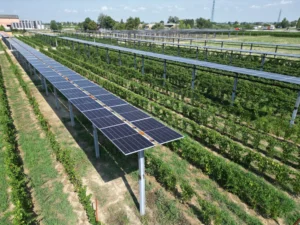Recently Caviro Extra, with a project led by theUniversity of Bologna also involving AIJUthe Spanish technological institute for toy development, and the Hungarian Pannon Pro Innovationa consultancy and innovation agency focused on climate change, presented a large audience of researchers and representatives from the production world with B-PLAS Demothe first trial plant for the production of PHAs (polyhydroxyalkanoates), biological and biodegradable plastics that will be made from food waste and waste sludge from treatment plants that treat agri-food chain waste.
or the Faenza-based company, this represents a further step towards the complete enhancement of agri-food chain waste.
The plant is part of the B-PLAS Demo project funded by EIT Climate-KIC, an organisation representing 400 public and private partners from 25 nations created to foster innovation able to reduce carbon dioxide emissions and accelerate decarbonisation processes. Established in 2010, in recent years EIT Climate-KIC has contributed to the financing of over 3.4 billion euros of technological innovation projects.
B-PLAS Demo, which will soon undergo the testing phase in which operational data is collected on the process, aims to produce PHAs using the residual carbon contained in sludge deriving from public and private treatment plants thanks to a series of simple, reliable and low-cost technologies..
These special biodegradable plastics can be used to produce packaging, single-use products, 3D prints and much more. «The advantage of this technology,” explains Cristian Torri, head of the project, “is that although the bioplastic produced is very valuable, the cost of production is reduced because the materials we use are usually discarded by major businesses».
Currently, the cheapest bioplastic reel costs more than €30/kg, pellets more than €4/kg: this new technology will make it possible to acquire PHAs at extremely competitive prices, enabling us to manufacture high quality products using processing waste. In addition, the bio-based bioplastic we obtain will be compostable, and therefore returned to the production cycle.
One of the scenarios outlined is that of producing bioplastic objects directly at home: «With the support of manufacturers and 3D printing,” concludes Torri, “it could be possible to produce zero-mile plastic materials directly at home».



